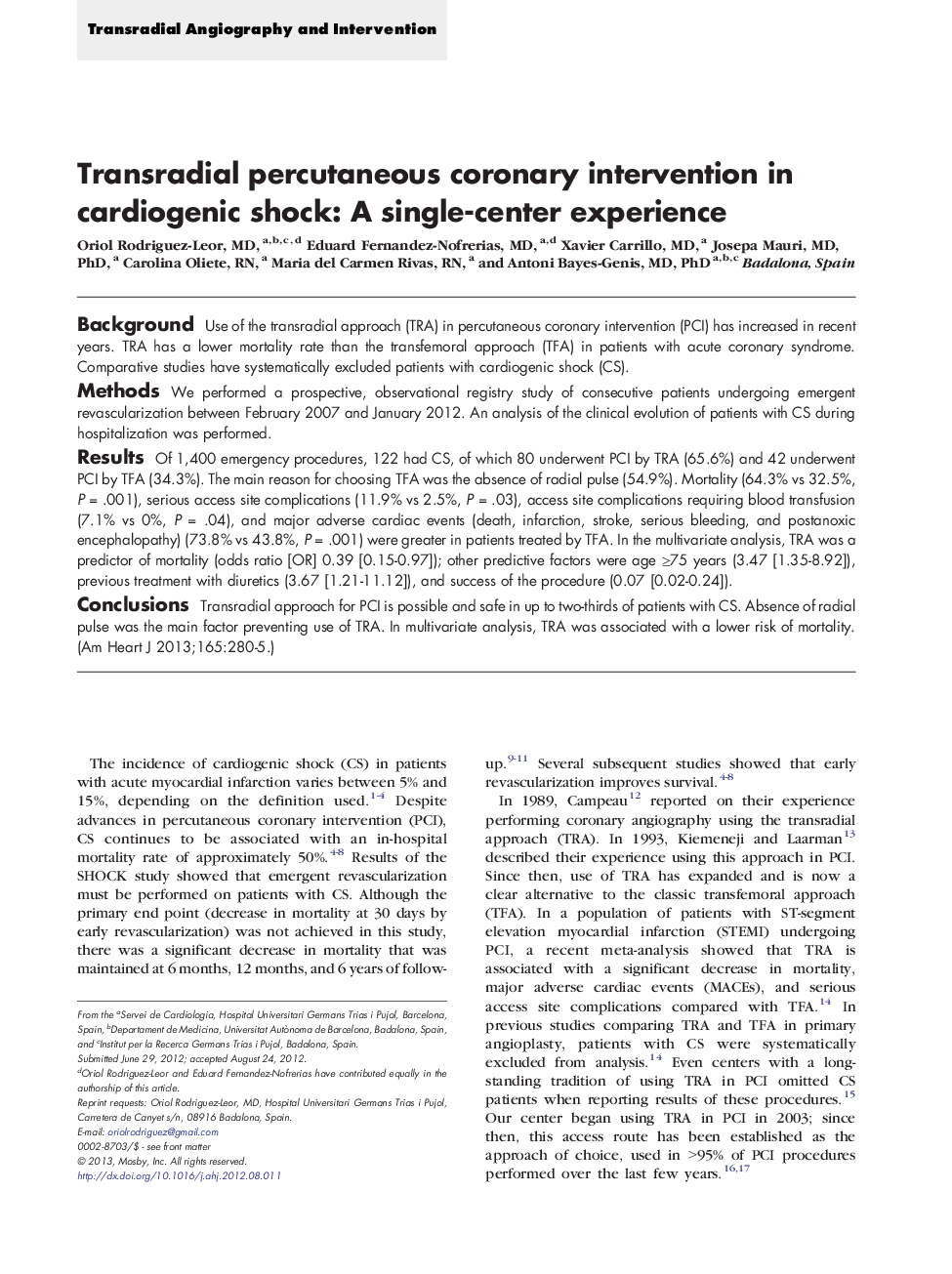| Article ID | Journal | Published Year | Pages | File Type |
|---|---|---|---|---|
| 2849458 | American Heart Journal | 2013 | 6 Pages |
BackgroundUse of the transradial approach (TRA) in percutaneous coronary intervention (PCI) has increased in recent years. TRA has a lower mortality rate than the transfemoral approach (TFA) in patients with acute coronary syndrome. Comparative studies have systematically excluded patients with cardiogenic shock (CS).MethodsWe performed a prospective, observational registry study of consecutive patients undergoing emergent revascularization between February 2007 and January 2012. An analysis of the clinical evolution of patients with CS during hospitalization was performed.ResultsOf 1,400 emergency procedures, 122 had CS, of which 80 underwent PCI by TRA (65.6%) and 42 underwent PCI by TFA (34.3%). The main reason for choosing TFA was the absence of radial pulse (54.9%). Mortality (64.3% vs 32.5%, P = .001), serious access site complications (11.9% vs 2.5%, P = .03), access site complications requiring blood transfusion (7.1% vs 0%, P = .04), and major adverse cardiac events (death, infarction, stroke, serious bleeding, and postanoxic encephalopathy) (73.8% vs 43.8%, P = .001) were greater in patients treated by TFA. In the multivariate analysis, TRA was a predictor of mortality (odds ratio [OR] 0.39 [0.15-0.97]); other predictive factors were age ≥75 years (3.47 [1.35-8.92]), previous treatment with diuretics (3.67 [1.21-11.12]), and success of the procedure (0.07 [0.02-0.24]).ConclusionsTransradial approach for PCI is possible and safe in up to two-thirds of patients with CS. Absence of radial pulse was the main factor preventing use of TRA. In multivariate analysis, TRA was associated with a lower risk of mortality.
